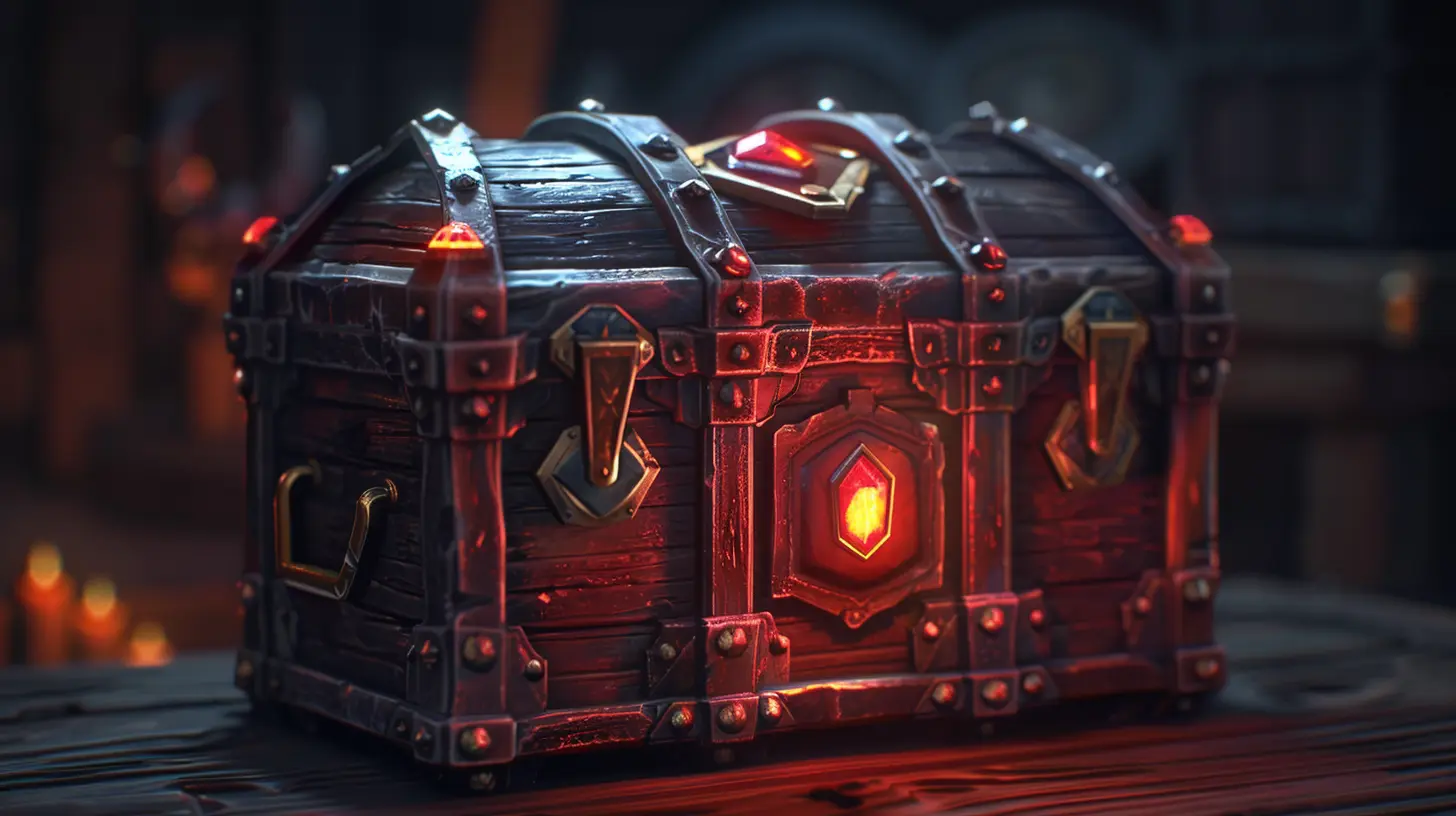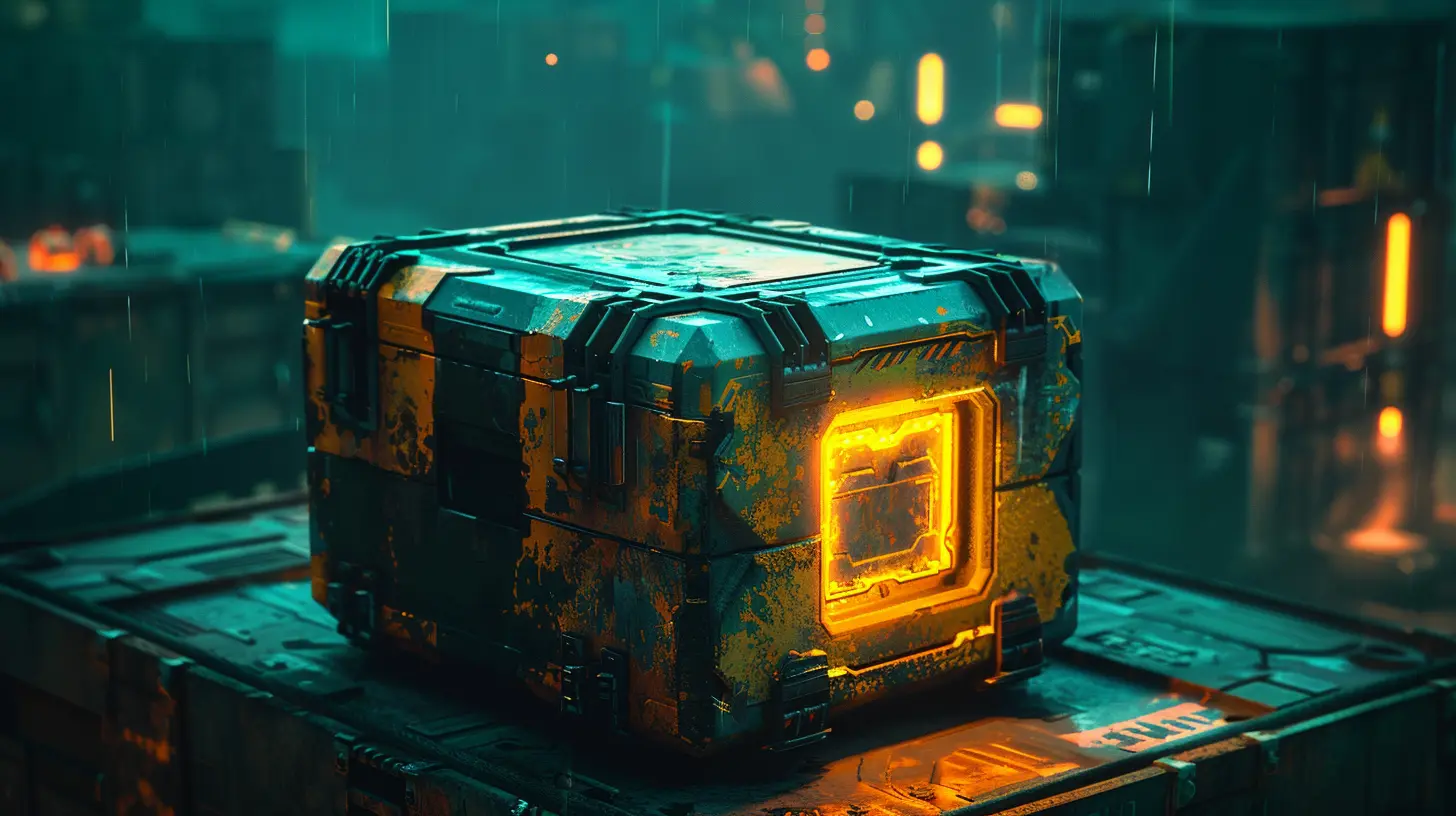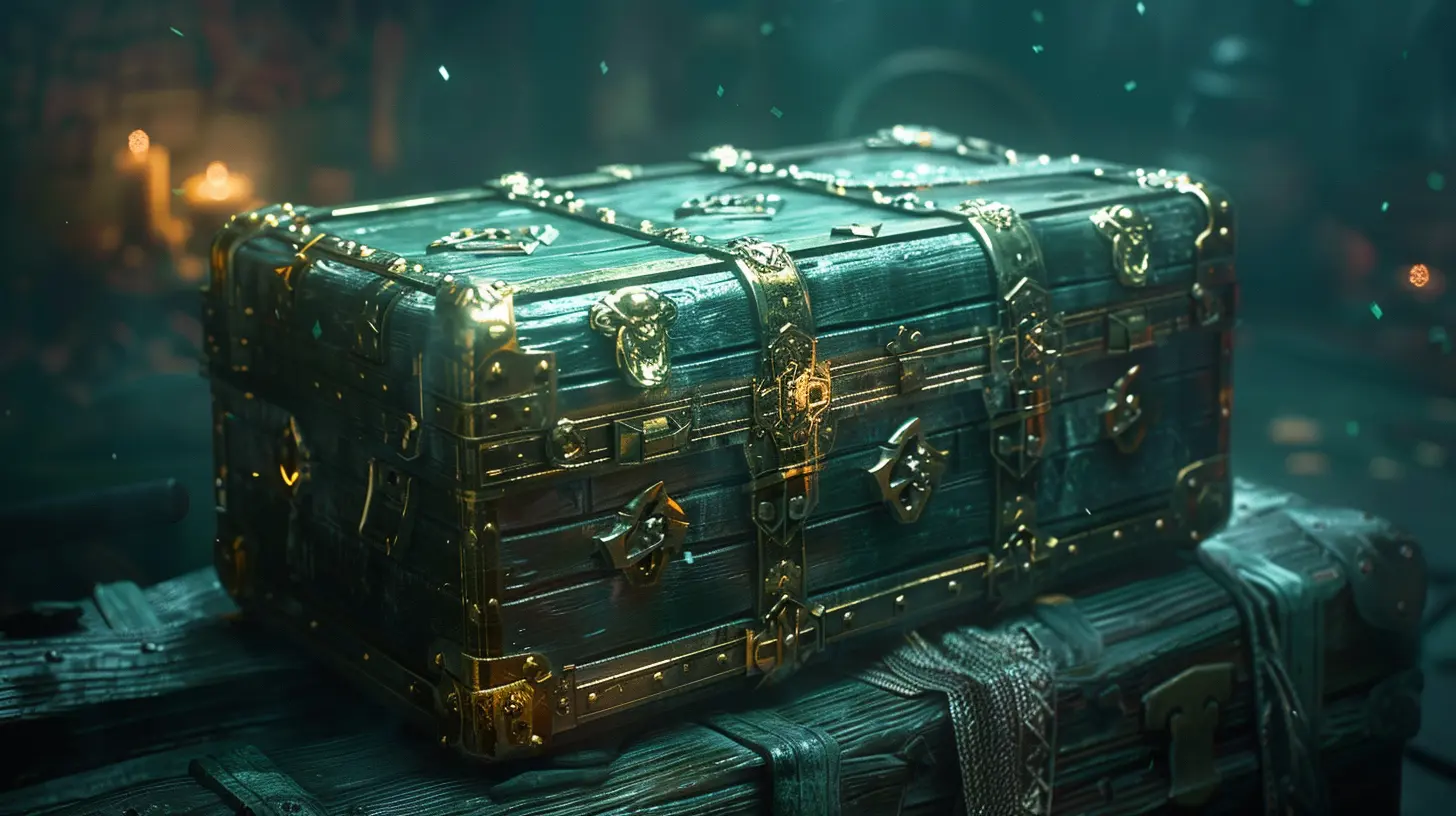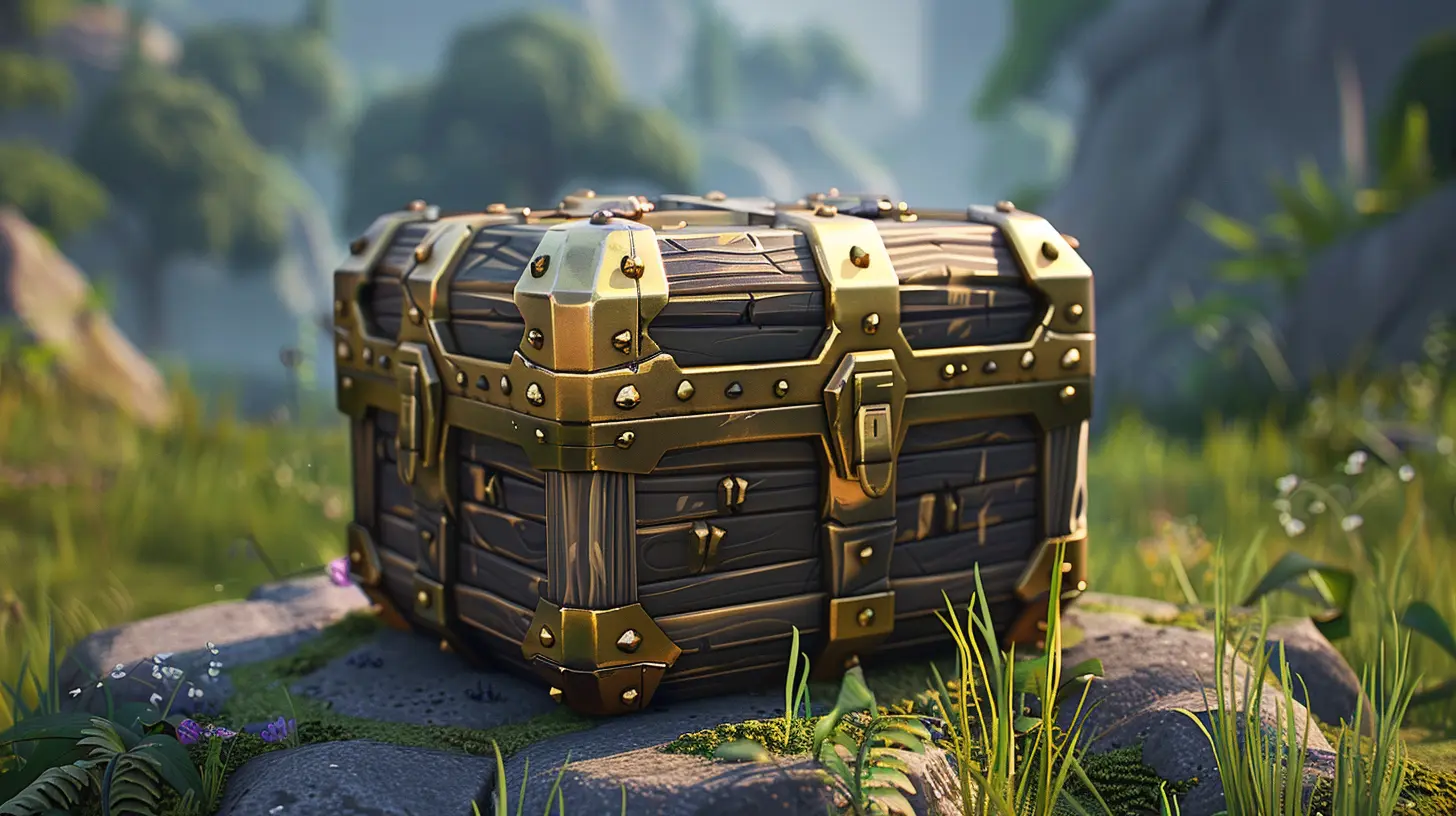Understanding the Drop Rates in Loot Boxes
22 May 2025
So, you’ve been grinding that game for hours, saving up your hard-earned in-game currency or real-world dollars, and now the moment of truth is here: cracking open that shiny loot box! The anticipation is palpable. What will you get? That rare skin you’ve been eyeing? Or… another duplicate item you didn’t need? If you’ve ever felt that mix of excitement and frustration, you’re not alone. That’s the magic—and mystery—of loot boxes.
But here's the kicker: Have you ever stopped and wondered about the "drop rates"? Like, what really determines your chances of getting that legendary item? Why do some players seem insanely lucky while others can spend a fortune and get nothing but scraps? Let’s roll up our sleeves and dive deep into understanding how loot box drop rates work. Trust me, by the time we’re done, you’ll look at those treasure boxes a little differently.
What Are Loot Boxes, Anyway?
First off, let’s make sure we’re all on the same page. Loot boxes—sometimes called crates, packs, or even supply drops—are like digital treasure chests. They’re a feature in countless video games, ranging from competitive shooters like Overwatch to collectible card games like Hearthstone. When you open one, you get randomized rewards: skins, weapons, emotes, new characters, or even additional in-game currency.Here’s the catch: you don’t know what’s inside until you open it. It’s like buying a pack of trading cards and praying the rare holographic Charizard is in there. The randomness keeps things exciting, but it also plays on our urge to roll the dice “just one more time.” And that’s where drop rates come into play.
What Are Drop Rates?
Okay, let’s talk drop rates. A drop rate is the probability of obtaining a specific item when you open a loot box. Think of it like a roulette wheel with different sections for different items. Rare items take up tiny slivers of the wheel, while common items take up most of the space. For example, if a legendary item has a drop rate of 1%, that means you’d (theoretically) need to open 100 loot boxes to have a decent shot at snagging it.Sounds simple, right? But here’s where it gets tricky. Game developers don’t always make those drop rates crystal clear. And even when they do, the numbers can be misleading. Spoiler alert: just because something has a 1% drop rate doesn’t mean you’re guaranteed to get it after 100 tries. Probability doesn’t work like that, and that’s where most players trip up.
Why Do Drop Rates Feel So Unfair?
Ever felt like your luck in loot boxes is just... cursed? You’re not imagining it. Let’s break down why drop rates can feel downright unfair sometimes.1. The Gambler’s Fallacy
This is a big one. The gambler’s fallacy is the mistaken belief that past events influence future probabilities. For example, if you’ve opened 50 loot boxes and still haven’t gotten that epic sword, you might think, “I’m due for a win.” Sorry to burst your bubble, but loot boxes don’t work that way. Each box is independent of the last, so your odds remain the same no matter how many times you’ve tried.2. Low Transparency
Many games keep their drop rates a secret. Without clear numbers, you’re left guessing how likely you are to get what you want. Even when drop rates are disclosed, they often appear in tiny print that’s easy to overlook. It’s like trying to read the terms and conditions for a long-winded software update—confusing, tedious, and designed to make you give up.3. RNG Gods
RNG (Random Number Generator) is the mathematical code that decides what you’ll get when you open a loot box. While RNG creates unpredictability, it also means that luck can vary wildly between players. One person might hit the jackpot on their first try, while someone else spends hundreds of dollars without seeing the same result. It’s like a slot machine in Vegas, except the payout is digital swag.
The Psychology Behind Loot Boxes
Here’s where things get interesting—loot boxes aren’t just about probabilities. Game designers know how to tap into our human psychology to make them more addictive. Let’s look at a few psychological factors at play:1. The Thrill of Uncertainty
Humans love surprises. Think about opening a gift on your birthday or unwrapping a chocolate bar with a golden ticket inside (okay, maybe that only happens in Willy Wonka). It’s the anticipation that gets us hooked. Even if we don’t always get what we want, the “what if” keeps us coming back.2. The Sunk Cost Fallacy
Ever found yourself saying, “Well, I’ve already spent $20 on loot boxes. What’s another $5?” That’s the sunk cost fallacy talking. It’s the idea that you’ve invested so much already that you might as well keep going. Spoiler: This is where wallets go to die.3. Social Proof
Nothing stings more than seeing someone else flaunting the rare item you didn’t get. “If they can get it, why can’t I?” Peer pressure and fear of missing out (FOMO) can make you feel like you need to keep trying until you hit the jackpot.Are All Loot Boxes Created Equal?
Not really. Different games have their own systems for loot boxes, and each one comes with its pros and cons. Let’s break down some popular approaches:1. Overwatch’s Cosmetic-Only Boxes
In Overwatch, loot boxes are purely cosmetic—meaning they don’t impact gameplay. While this approach avoids the “pay-to-win” controversy, it still feeds into the same excitement (and frustration) as chasing rare skins.2. Gacha Systems in Mobile Games
Mobile games like Genshin Impact use a “gacha” system, where loot boxes might contain powerful characters or gear. Some of these games include “pity systems,” which guarantee a rare item after a certain number of tries. It’s like the game tossing you a bone for your effort.3. Card Packs in Collectible Games
Games like Hearthstone use loot boxes disguised as card packs. The randomness here affects your deck-building strategy, adding another layer of complexity and, well, cost.Tips to Make Loot Boxes Work for You
Okay, so we’ve established that loot boxes are a mix of fun and frustration. But how can you enjoy the thrill of opening them without going broke or driving yourself crazy? Here are some tips:1. Set a Budget—and Stick to It
Seriously, make a spending limit and don’t cross it. Treat loot boxes like you would a night out at the movies: enjoyable, but not something you want to sink your savings into.2. Beware of FOMO
Just because everyone else is showing off that limited-edition skin doesn’t mean you need it. Remind yourself that loot boxes—at the end of the day—are just pixels wrapped in hype.3. Celebrate Small Wins
Did you pull a rare item, even if it wasn’t the one you wanted? Celebrate it anyway! Sometimes, shifting your perspective can make the experience more satisfying.4. Look for Games with Transparent Systems
Support games and developers that disclose their drop rates openly. The more transparency we demand as players, the more likely the industry is to listen.The Future of Loot Boxes
Here’s some good news: the gaming industry is starting to respond to player concerns. In some countries, loot boxes are being regulated or even banned because of their similarities to gambling. Meanwhile, more developers are including features like pity systems, which make drop rates feel a bit fairer for everyone.As players, it’s up to us to stay informed and make smart choices. Remember, loot boxes are just one part of the gaming experience. They’re meant to add a little spice, not ruin your fun. So the next time you crack open a loot box, take a deep breath, cross your fingers, and remember: it’s all about the journey, not just the loot.
all images in this post were generated using AI tools
Category:
Loot BoxesAuthor:

Lucy Ross
Discussion
rate this article
3 comments
Carina McMichael
Great article! Understanding loot box drop rates really helps us make smarter choices in games. It’s fascinating how luck plays a role. Thanks for breaking it down!
May 29, 2025 at 4:13 PM

Lucy Ross
Thank you! I'm glad you found it helpful. Understanding those rates can definitely enhance our gaming experience!
Ethan Wilkerson
Great article! Understanding drop rates in loot boxes is crucial for gamers. Transparency from developers can enhance player trust and foster a fairer gaming environment. I hope more companies adopt clear systems, so players can make informed decisions about their purchases. Keep up the great work!
May 27, 2025 at 2:21 PM

Lucy Ross
Thank you for your thoughtful comment! Transparency in drop rates is indeed key to fostering trust and fairness in gaming. I appreciate your support!
Avianna Pruitt
While the article provides a solid overview of loot box mechanics, it overlooks the psychological impact of randomized rewards on player behavior. A deeper exploration of how these drop rates influence spending habits and player satisfaction could enhance understanding and spark important discussions about ethics in game monetization.
May 23, 2025 at 2:27 AM

Lucy Ross
Thank you for your feedback! I appreciate your point about the psychological impact of randomized rewards and will consider incorporating that perspective in future discussions on the ethics of loot box monetization.



